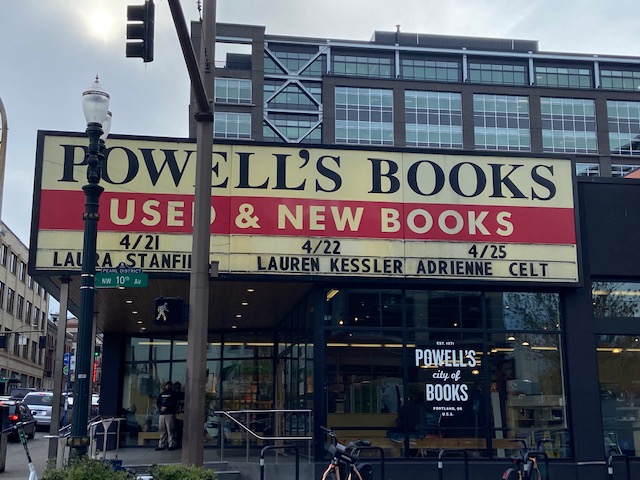It was the mid-1990s. I was sitting across a white damask table-clothed table at a midtown Manhattan steak house watching my editor, Bob Loomis, alternately cut into a ribeye and sip a dry Martini. This was it, and I didn’t even know it.
Loomis was then a septuagenarian, a very much living legend in the world of publishing, a man who had edited the likes of Maya Angelou, William Styron, and Calvin Trillin I didn’t know this at the time. I didn’t Google him because Google didn’t exist. I didn’t look him up in Wikipedia because there was no Wikipedia. What I knew is that I had a contract for my first book, “Stubborn Twig,” with Random House. What I knew was that an impressive older man in an expensive suit was taking me out for a pricey lunch and treating me like a was somebody.
In truth, I was nobody. So I put my shoulder to the wheel and wrote the hell out of the book, benefitting immensely from Bob Loomis’ frequent phone calls and quietly brilliant edits and queries (in pencil in the margins of my hard-copy manuscript). Three years later, when the book launched, it was greeted with reviews in more than a dozen newspapers. That was when so many newspapers had weekly book review sections. Meanwhile my publicity person sent me a multi-page itinerary that listed the bookstore events that had been arranged for me, along with my travel schedule, the hotels where I would stay and the names of the handlers that would be chauffeuring me around in each city.
All that, even though I was not a young, hot debut novelist. I was not a household word — even in my own household. I was simply getting the treatment that book authors got. I didn’t know it then, but I had gained entry to a world that would soon disappear. And my subsequent life as a writer would change in ways I could never have imagined back then and still struggle to imagine even as I am living that life.
The author as DIY marketing department
This is my life as a nonfiction author now:
“Free: Two Years, Six lives and the Long Journey Home,” my eleventh book of narrative nonfiction, launched this spring. I have never met my editor in person. The only sustained conversation I have had with her was early on, pre-contract, when we were sussing out each other. Her Track Change notes and edits in Word.doc were fine but minimal.
This is not because I am now such a great writer that I no longer need a great editor. It is, I believe, because many of today’s editors have decades less experience than the editors of yesteryear, lower standards — I am now routinely praised for merely delivering a manuscript on deadline — and less time to devote to each project. My agent (a true gem and, not incidentally, an erstwhile “editor of yore”) offered the most insightful comments.
Related stories
Story Craft: So you want to write a book? A strong story and resilient ego
Story Craft: So you want to write a book? Agents, queries and timelines
Story Craft: So you want to write a book? Risks and rewards of memoir
When the manuscript was in the process of becoming a book, I did what editors of yore used to take care of: I wrote the copy for the flap and back of the book. I went begging my writer friends for endorsement blurbs, followed up with near-desperate pleas, extracted pull-quotes from their generous responses, then compiled and sent these to the editor. I spent countless hours researching award-winning book covers, sending images, color palettes and type fonts to my editor. I took this on because I had learned that out-sourced illustrators had most often not read the book they were assigned to illustrate and had, as outsiders, not been part of any editorial discussions.
When it came to the title of the book, however, I lost the control I had always had. The marketing department took over. My agent and I had to amount a concerted effort to secure a title we could live with.
This extra work might be considered part of, or at least connected to, the writing process. But there is so much more to being an author now, and by “now” I mean for at least the last decade. For those who have visions of being the courted and cared for, that woman at the midtown Manhattan steakhouse, the cherished writer who flourishes within the brilliant, clever, commanding, and attentive world of commercial publishing: Sorry. No.
Blogs, tweets and favors from friends
What follows is a chronicle of some of the many responsibilities I — and most authors — shoulder today, the jobs we now must do, the tasks that fall to us if we want to see our work have a chance of success. If this sounds like whining, it sort of is. But as I whine, please know that I am conscious of the extraordinary privilege of voice. I am conscious of the privilege of being able to practice my craft, even if it means, as I heard a fellow journalist-turned-author lament the other day: relentless self-promotion.
The “cover reveal.” When the cover for the book was finalized — note my use of passive voice as there were three rounds of (to me) opaque market-testing going on that determined the final decision — it was time for me to start promoting the book. The book would not be published for months, but revealing the cover was an “opportunity” to gin up excitement and get people to pre-order. To be clear: I loved the cover. We, my agent and I, went to the mattresses (as Sonny Corleone put it) to get the cover we loved. But the point of revealing it (across all my social channels…more on this in a moment) was not to revel in the design but to offer a one-click option to pre-order. Pre-orders matter. A lot.
The blog slog. I created a book-centric blog back in 2011 when “My Teenage Werewolf: A Mother, A Daughter, A journey through the Thicket of Adolescence” was first published. I did this because, even after I was finished reporting and writing the book, my research into the mother-daughter relationship did not end. I wanted to share it. I did the same thing with my next book, “Counterclockwise,” which was my immersive investigation into the hope of the science of aging and the hype of the “anti-aging” movement. There was so much new research coming out and so much Internet-fueled garbage that I had to find a way to keep writing about the subject.
But all this subject-specific blogging was not, alas, helping to develop (and elevate) my platform, my (to quote from masterclass.com) “ability to market (my) work, using (my) overall visibility to reach a target audience of potential readers.” I was blogging to make new information available to those who might be interested. I was not blogging then to promote these books or to create a (Yes, I will use the B word. ) “brand” for myself.
Enter my now-branded blog (www.laurenchronicles.com) in which I labor to maintain my integrity while also creating thinly veiled promotional posts leading up to publication and during the important two to three months that follow. Because I am a writer who blogs and not a blogger who writes, I spend upwards of three hours crafting these 400-word posts, each a self-contained essay, ending with the implied or stated BUY THIS BOOK. I post links to the essay on my personal and author Facebook pages. I tweet it out. I try to figure out how to engage the largely visual audience that follows Instagram and mostly “likes” images of cats sunning themselves. Just in the last two weeks, I have spent more than a full workday creating reels for Instagram.
The maw of social media. I post. A lot. Much of it is book-related. I try — but I do not always succeed — to avoid those cringe-worthy “humble brag” posts ubiquitous on social media. (I am humbled by this glowing review of my new book… Humility? Really?) While I am on all these channels, I must pay close attention to such unwriterly but stunningly important things as optics, hashtags, SEO, followers, page views, bounce rate, device breakdown, referral sources. As part of my platform — without which I could not function in the book publishing world —I created and personally maintain and update my author site, my blogsite, my two Facebook accounts, my Twitter and Instagram feeds, my Amazon author page and my Goodreads page.
Is the tech stuff in my wheelhouse? Well, now it is. Does all this social-ing eat into reporting and writing time? You bet.
That’s why I was thrilled to hear that my “launch team” was going to play a big part in promoting my latest book. I heard this encouraging news during a three-hour webinar presented by my publisher. I have a team! I immediately jumped into chat to ask how I could connect with my team.
The self-launched team. It turns out that it was my responsibility to create this team by personally reaching out to friends, supporters, readers, my social media followers, anyone I knew who might be entreated to beat the drum for my book. I was to invite them to be “part of the team” and suggest different ways they could help: pre-ordering the book, posting pre-publication reviews on Goodreads, bombarding Amazon with five-star reviews the day after publication, liking my posts, sharing my posts, creating their own posts about my book, talking up my book to book groups or organizations they were part of. This would be ongoing communication. Every week I was to email my team with a new idea or a link to my new post or a review or interview that just came out or an announcement of a reading I was doing. I could, it was suggested, make little videos of myself talking excitedly about the book — a personal touch — and send these to the team.
Balancing the privilege and realities of authorship
And there is so much more that occupies me these days, including researching relevant podcasts and creating specific pitches for each; teaching myself how to produce reels for Instagram that are engaging but not silly or snarky; creating YouTube videos; immersing myself in TikTok (because #bookTok) to understand this Thing. And wishing that I was, instead, polishing the proposal for a new book. Wishing instead I was plunging ahead with research and reporting. Wishing I was living the life of a writer and not a self-promoter.
And yet, to live this (very privileged) authorial life, I must, like just about every other author today, spend a significant amount of my time not practicing my craft. Also, like possibly 98 percent of all book authors, I do not make a living wage from my books so must bolster my income and pay for my health insurance with teaching gigs and work-for-hire opportunities.
This is the reality for those of us who are not celebrities or “influencers,” those of us who do not have social media followers measured in the “Ks,” those of us whose life, work and thoughts do not go viral.
You know, we journalists. We who strive to tell important stories too big and too complex to fit into a newspaper article, or even a series. We who stubbornly dream about living the (vanished) life of the writer.
***
Narrative journalist Lauren Kessler is the author of 15 books. Her work often explores society's invisible subcultures Founder and former director of a graduate program in literary journalism at the University of Oregon, she currently teaches storytelling for social change at the University of Washington.



